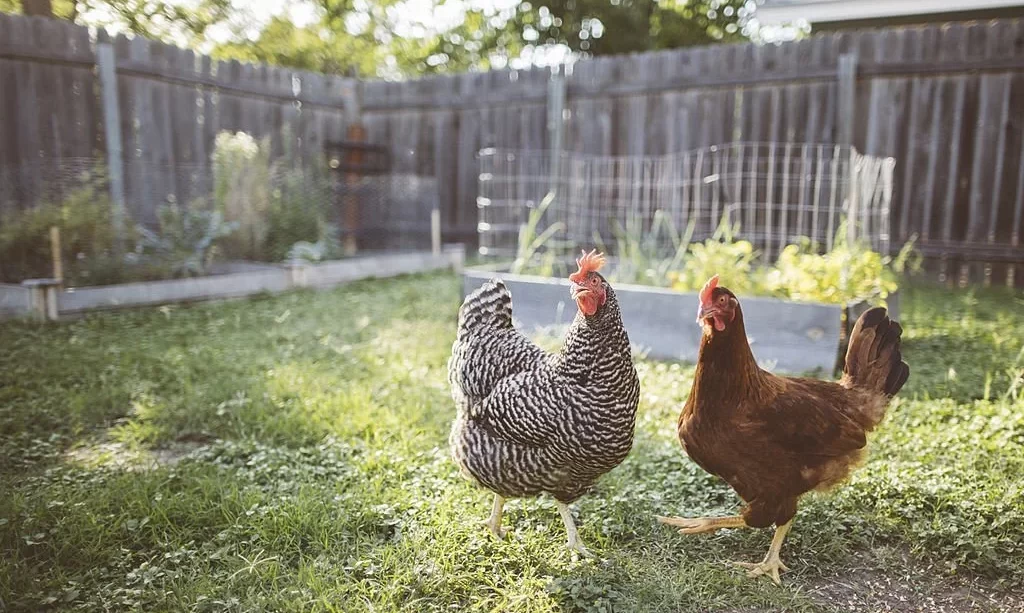When it comes to the world of leafy greens, iceberg lettuce often takes center stage with its crisp texture and refreshing taste. But if you’re a chicken owner or simply curious about the dietary choices for your feathered companions, you might wonder: Can chickens eat iceberg lettuce? In this article, we’ll explore the realm of iceberg lettuce and whether it can be a safe and nutritious addition to your chicken’s diet. Understanding the nutritional value of iceberg lettuce is crucial for making informed decisions about what to feed your clucking companions.
What is Iceberg Lettuce?
Iceberg lettuce, scientifically known as Lactuca sativa, is a familiar salad green known for its distinctive features. It’s recognized by its pale green leaves, tightly packed head, and characteristic crispness. Unlike some other leafy greens, iceberg lettuce has a mild, watery flavor, making it a popular choice for salads and sandwiches.
The name “iceberg” lettuce derives from the historical practice of packing these lettuces in ice during transport to keep them fresh. Its crunchy leaves and ability to hold up well in storage have contributed to its popularity in the culinary world. But can these qualities make it a suitable treat for your chickens?
Nutritional Value of Iceberg Lettuce
To determine if iceberg lettuce is suitable for chickens, we must first understand its nutritional profile. While iceberg lettuce is not as nutrient-dense as some other leafy greens like spinach or kale, it still offers valuable vitamins and minerals.
Iceberg lettuce is a decent source of vitamin A, which is important for maintaining good vision and a strong immune system in chickens. It also contains vitamin K, which plays a role in blood clotting and bone health. Additionally, iceberg lettuce provides dietary fiber, which supports healthy digestion in chickens.
However, it’s essential to note that iceberg lettuce is primarily composed of water, so its overall nutrient content is lower compared to darker leafy greens. As a result, its role in a chicken’s diet should be more about hydration and variety rather than being a primary source of nutrition.
Now that we’ve explored what iceberg lettuce is and its nutritional value, let’s delve deeper into whether it can be a suitable addition to your chicken’s diet in the following paragraphs.
Can Chickens Eat Iceberg Lettuce?
Chickens are known for their diverse and omnivorous diet, which includes a wide range of foods. When it comes to iceberg lettuce, the answer is generally yes, chickens can eat it. Iceberg lettuce is not toxic to chickens and can be offered as an occasional treat. Many chickens enjoy pecking at and consuming this leafy green due to its crisp texture.
However, there are some important considerations to keep in mind. Iceberg lettuce should be offered in moderation and should not replace the primary components of a chicken’s diet, such as poultry feed and fresh water. While it can provide hydration and variety, it should not be the sole source of nutrients for your chickens. Additionally, chickens should have access to grit to aid in the digestion of leafy greens like iceberg lettuce.
Benefits of Feeding Iceberg Lettuce to Chickens
Including iceberg lettuce in your chicken’s diet can offer several potential benefits:
- Hydration: Iceberg lettuce has a high water content, which can help keep your chickens hydrated, especially during hot weather.
- Variety: Offering different types of greens, like iceberg lettuce, can add variety to your chicken’s diet and prevent dietary boredom.
- Vitamin A: The presence of vitamin A in iceberg lettuce can support good vision and overall immune health in chickens.
- Digestive Health: The dietary fiber in iceberg lettuce promotes healthy digestion in chickens, aiding in nutrient absorption and bowel regularity.
- Low-Calorie: Iceberg lettuce is low in calories, making it a low-risk treat option for chickens.
While iceberg lettuce may not be as nutrient-dense as some other greens, it can be a refreshing and enjoyable addition to your chicken’s diet when offered responsibly.
Risks and Precautions
While feeding iceberg lettuce to chickens can have benefits, there are also some risks and precautions to be aware of:
- Moderation: Offer iceberg lettuce in moderation. Too much can lead to digestive upset in chickens, as it can be watery and may not provide all the necessary nutrients.
- Primary Diet: Ensure that iceberg lettuce does not replace your chicken’s primary diet, which should consist of high-quality poultry feed. Lettuce is a supplementary treat, not a staple.
- Washing: Thoroughly wash iceberg lettuce to remove dirt and potential contaminants before feeding it to your chickens.
- Grit: Chickens should have access to grit, small stones or pebbles, to aid in the digestion of leafy greens.
- Individual Preferences: Be aware that individual chickens may have different preferences, so not all of them may enjoy iceberg lettuce.
In conclusion, chickens can enjoy iceberg lettuce as an occasional treat, and it can provide some hydration and variety to their diet. By offering it in moderation and maintaining a balanced diet that includes poultry feed and other safe foods, you can ensure that your chickens stay healthy and content in your coop or backyard. Responsible chicken care involves providing a diverse diet that meets their nutritional needs while allowing them to enjoy the occasional leafy delight.
How to Feed Iceberg Lettuce to Chickens
Feeding iceberg lettuce to your chickens is a straightforward process, but it’s crucial to do it right to ensure their safety and enjoyment:
- Fresh and Clean: Start by selecting fresh iceberg lettuce. Ensure that it’s free from wilting, discoloration, or signs of spoilage. Fresh lettuce is more appealing to chickens.
- Thoroughly Wash: Rinse the iceberg lettuce thoroughly under running water to remove any dirt, pesticides, or contaminants. This step is essential for the safety of your chickens.
- Chop into Bite-sized Pieces: Chop the iceberg lettuce into smaller, manageable pieces. Smaller pieces are easier for chickens to peck at and consume.
- Offer in Moderation: Present the prepared iceberg lettuce to your chickens as an occasional treat. You can scatter it in their feeding area, hang it as a leafy “piñata,” or mix it with their regular feed.
- Observe Their Reaction: Pay attention to how your chickens react to the iceberg lettuce. Some chickens may eagerly consume it, while others may be more hesitant. Allow your chickens to explore and try new foods at their own pace.
Other Safe Foods for Chickens
In addition to iceberg lettuce, there are several other foods that are safe and beneficial for chickens:
- Grains: Chickens enjoy grains like corn, barley, and oats. These grains provide essential carbohydrates for energy.
- Fruits: Offer a variety of fruits such as apples, bananas, and berries as occasional treats. These fruits can add natural sweetness to their diet.
- Vegetables: Chickens appreciate vegetables like carrots, cucumbers, and leafy greens such as spinach and lettuce. These provide vitamins and minerals.
- Protein Sources: Include protein sources like mealworms, insects, and legumes. Protein is crucial for feather and egg production.
- Grit: Ensure that your chickens have access to grit, small stones or pebbles that help them grind down and digest tougher plant material like leafy greens.
- Dried Black Soldier Fly Larvae: Scatter FLYGRUBS on the ground to stimulate natural feeding instincts; these nutrient-dense black soldier fly larvae attract chickens, ducks, bluebirds, and more
- High Calcium Chicken Treats: These black soldier fly larvae provides more calcium than mealworms; robust protein content (36 to 42 percent) and beneficial fats ensure healthy birds
- Convenient Storage and Usage: Ideal for all seasons, the packaging allows for easy storage and feeding; they are a perfect bird seed alternative and do not require refrigeration for on-the-go feeding
- Resealable Packaging: Our 10 lbs box of black soldier fly larvae features a resealable bag; ensures the grubs stay fresh and whole, eliminating the need for live or freeze-dried options
- Supports Healthy Chickens: These dried black soldier fly larvae promote healthier feather production and stronger eggshells; vital nutrients support optimal energy levels and egg production in hens
Conclusion
In conclusion, feeding iceberg lettuce to your chickens can be a refreshing and enjoyable addition to their diet when offered responsibly. These leafy greens can provide hydration, variety, and some essential nutrients, such as vitamin A and dietary fiber.
However, it’s vital to remember that iceberg lettuce should not replace your chicken’s primary diet of poultry feed and fresh water. It is a supplementary treat, and moderation is key to avoid digestive issues. By following the guidelines for feeding iceberg lettuce and maintaining a diverse diet for your chickens, you can ensure that they stay healthy, active, and content in your coop or backyard. Happy and well-fed chickens are more likely to thrive and provide you with delicious eggs and companionship.





